A Systematic Review of Implementing Multi-Criteria Decision-Making (MCDM) Approaches for the Circular Economy and Cost Assessment
Abstract
1. Introduction
2. Method
Systematic Literature Review
3. Results
3.1. Bibliometric Data
3.2. Geographical Distribution
3.3. Keyword Frequency and Co-Occurrence
4. Critical Review
4.1. Circular Economy Analysis
| Source | Area of Study | Criteria | Focus of Study |
|---|---|---|---|
| [4] | Risk | Risk of management and decision making, risks related to labor, quality-based risks, design-related risks, performance-related risks, risks related to human resources, supplier-related risks, risks related to material cost, risk of supply chain integration | Supply chain |
| [5] | Textiles | Environmental, economic, product quality | Sustainability of denim fabric production |
| [7] | Hybrid Fuzzy Model | Environmental, Technical, Social, Business/Legislative, Economic and Innovation | Contractors in the field of hydropower projects |
| [29] | Building industry | GWP, human toxicity potential (HTP), acidification potential (AP), terrestrial ecotoxicity (TE), and fossil depletion (FD), and cost | Circularity |
| [36] | Building industry | Global Warming Potential (GWP), Terrestrial acidification potential (TAP), Human non-carcinogenic toxicity (HCT), Ozone formation, human health (OHH), and fossil resource scarcity (FRS), embodied energy, and cost | Reusability |
| [37] | Cable and wire industry (recycling key materials like copper and PVC) | Customer, financial, learning and growth, internal process | Circular economy adoption barriers |
| [38] | Pipe treatments in textile | Low/no-cost high return, (i) high-cost high return, and (ii) medium-cost medium return. Resource efficiency (water, energy, and chemicals), financial feasibility, and environmental impact | Cleaner production and SEMPs |
| [40] | Waste management | Economic, technical, resource utilization, environmental | Plastic waste |
| [41] | Food chain | Sets of 15 barriers across 6 dimensions (production, management and collaboration, technical and technological capabilities, financial issues, government policies, cultural barriers) | Food waste |
| [42] | Agricultural | Specialized knowledge required, economic value (e.g., savings or additional sales per kilogram), investment in technology, access to markets. implementation feasibility, biomass efficiency and availability nationwide. | Implementation feasibility, biomass |
| [43] | Agricultural Residues to a Building Material | Cost (e.g., lack of initial investment), infrastructure (e.g., facilities and specialized equipment), technology (e.g., engineering systems), knowledge (e.g., specialized knowledge, incomplete and imperfect information), policy (e.g., unfavorable and uncertain fiscal policies) an social and cultural (e.g., resistance to change) | Agricultural residues into building materials |
| [44] | Textile | Nine CE strategies are analyzed (election of low-impact materials and renewable energy, reverse logistics, efficient use of resources, standardization, refurbishment, corrective maintenance, waste material recovery and reprocessing, | Fashion footwear |
| [45] | Car-Sharing | Technical (e.g., one-way flexibility), economic (e.g., cost, initial investment and operational cost), social (e.g., accessibility, security and equity), and environmental criteria (e.g., pollution and energy use) | Carpooling |
| [46] | Supply chain | Economic (e.g., product cost/price, IT facilities), Environmental (e.g., green product design, R&D in environmental issues) Social (e.g., compliance with regulations, work safety procedures) | Agri-based manufacturing |
| [48] | Fuels for Navy Ships | Density, Autoignition temperature, Flammable limits, etc. Safety, Global Availability, Supply Capacity, Durability, Adaptability, Engine Performance, Engine Emissions, and Cost | Alternative Fuels |
| [49] | Heavy metals from biomass liquid | Surface area, Porosity, Stability, and Reactivity | Nanocomposites |
| [50] | Sustainable waste management | Global Warming Potential (GWP), Abiotic Depletion Potential (ADP), Marine Ecotoxicity Potential (METP), Freshwater Ecotoxicity Potential (FETP), Terrestrial Ecotoxicity Potential (TETP), Eutrophication Potential (EP), Terrestrial Acidification Potential (TAP), Photochemical Oxidant Potential (POFP), Ozone Depletion Potential (ODP), and Human Toxicity Potential (HTP) | Polyethylene terephthalate |
| [51] | Waste management | (1) Economic (e.g., costs of materials, maintenance, and disassembly), (2) environmental (e.g., embodied energy, carbon emissions, recyclability, and reusability and (3) social (e.g., user comfort, safety, and innovation). | Refurbishment of obsolete educational public building stock |
| [52] | Waste management | Monetary, energy, environmental, material, temporal, efficiency, social dimensions | End of life tires |
| [53] | Construction and Demolition Waste | Economic, environmental, social | Construction and demolition waste |
| [54] | Aircraft | technological performance and environmental impact, cost, and circularity | Sustainable Aviation |
| [55] | Method for locating parking centers | Economic, environmental | Recyclable waste transportation vehicles |
| [56] | Agricultural | Biomass availability, proximity to existing plants, population density | Rice husk-based electricity generation |
| [57] | Renewable energy supply chain | Resource management, executive capabilities, recycle, social, cost and environment | Renewable energy chain |
| [58] | Risk | Supply chain complexity, resource availability and quality, technological challenges | Supply chains |
| [59] | Building industry | GWP, embodied energy, cost, and social | Construction materials |
| [60] | Product-service systems (PSS) design | Engineering characteristics, cost-related (e.g., purchase price, operational costs, investment in new technologies) | Value assessment in product-service systems |
| [61] | Optimization algorithms | Distance | Ranking of tailings |
4.2. Multi-Criteria Decision-Making Methods
4.3. Barriers to Implementation of the Circular Economy
5. Discussion
6. Limitations of Research
7. Conclusions
Supplementary Materials
Author Contributions
Funding
Conflicts of Interest
References
- Kirchherr, J.; Yang, N.H.N.; Schulze-Spüntrup, F.; Heerink, M.J.; Hartley, K. Conceptualizing the Circular Economy (Revisited): An Analysis of 221 Definitions. Resour. Conserv. Recycl. 2023, 194, 107001. [Google Scholar] [CrossRef]
- Chauhan, C.; Parida, V.; Dhir, A. Linking circular economy and digitalisation technologies: A systematic literature review of past achievements and future promises. Technol. Forecast. Soc. Change 2022, 177, 121508. [Google Scholar] [CrossRef]
- Nudurupati, S.S.; Budhwar, P.; Pappu, R.P.; Chowdhury, S.; Kondala, M.; Chakraborty, A.; Ghosh, S.K. Transforming sustainability of Indian small and medium-sized enterprises through circular economy adoption. J. Bus. Res. 2022, 149, 250–269. [Google Scholar] [CrossRef]
- Kazancoglu, Y.; Ozkan-Ozen, Y.D.; Sagnak, M.; Kazancoglu, I.; Dora, M. Framework for a sustainable supply chain to overcome risks in transition to a circular economy through Industry 4.0. Prod. Plan. Control 2023, 34, 902–917. [Google Scholar] [CrossRef]
- Fidan, F.; Aydoğan, E.K.; Uzal, N. An integrated life cycle assessment approach for denim fabric production using recycled cotton fibers and combined heat and power plant. J. Clean. Prod. 2021, 287, 125439. [Google Scholar] [CrossRef]
- Garcia-Bernabeu, A.; Hilario-Caballero, A.; Pla-Santamaria, D.; Salas-Molina, F. A Process Oriented MCDM Approach to Construct a Circular Economy Composite Index. Sustainability 2020, 12, 618. [Google Scholar] [CrossRef]
- Koc, K.; Ekmekcioglu, Ö.; Işık, Z. Developing a Hybrid Fuzzy Decision-Making Model for Sustainable Circular Contractor Selection. J. Constr. Eng. Manag. 2023, 149, 04023095. [Google Scholar] [CrossRef]
- Demir, G.; Chatterjee, P.; Pamucar, D. Sensitivity analysis in multi-criteria decision making: A state-of-the-art research perspective using bibliometric analysis. Expert Syst. Appl. 2024, 237, 121660. [Google Scholar] [CrossRef]
- Balasbaneh, A.T.; Sher, W.; Rahman, I.A.; Juki, M.I.; Zainun, N.Y. Greenhouse gas emission evaluation and barrier of implementing modular construction buildings. In Advances and Technology Development in Greenhouse Gases: Emission, Capture and Conversion; Elsevier: Amsterdam, The Netherlands, 2024; pp. 183–204. [Google Scholar] [CrossRef]
- Balasbaneh, A.T.; Yeoh, D.; Ramli, M.Z.; Valdi, M.H.T. Different alternative retrofit to improving the sustainability of building in tropical climate: Multi-criteria decision-making. Environ. Sci. Pollut. Res. 2022, 29, 41669–41683. [Google Scholar] [CrossRef]
- Tversky, A.; Kahneman, D. Judgment under Uncertainty: Heuristics and Biases. Science 1974, 185, 1124–1131. [Google Scholar] [CrossRef]
- Gigerenzer, G.; Gaissmaier, W. Heuristic decision making. Annu. Rev. Psychol. 2011, 62, 451–482. [Google Scholar] [CrossRef] [PubMed]
- Payne, J.W.; Bettman, J.R.; Johnson, E.J. The Adaptive Decision Maker; Cambridge University Press: Cambridge, UK, 1993. [Google Scholar]
- Tversky, A. Elimination by aspects: A theory of choice. Psychol. Rev. 1972, 79, 281–299. [Google Scholar] [CrossRef]
- Benhamida, H.; Selim, H.M.; Benmamoun, Z.; Agarwal, V.; Jebbor, I.; Alabed, N. Fuzzy Multi-Criteria Decision-Making for Sustainable Risk Management. J. Posthumanism 2025, 5, 691–723. [Google Scholar] [CrossRef]
- Jebbor, I.; Benmamoun, Z.; Hachmi, H. Revolutionizing cleaner production: The role of artificial intelligence in enhancing sustainability across industries. J. Infrastruct. Policy Dev. 2024, 8, 7455. [Google Scholar] [CrossRef]
- Bettman, J.R.; Luce, M.F.; Payne, J.W. Constructive consumer choice processes. J. Consum. Res. 1998, 25, 187–217. [Google Scholar] [CrossRef]
- Delcea, C.; Nica, I.; Georgescu, I.; Chiriță, N.; Ciurea, C. Integrating Fuzzy MCDM Methods and ARDL Approach for Circular Economy Strategy Analysis in Romania. Mathematics 2024, 12, 2997. [Google Scholar] [CrossRef]
- Taylan, O.; Guloglu, B.; Alkabaa, A.; Sarp, S.; Milyani, A.H.; Alidrisi, H.; Balubaid, M. AI based fuzzy MCDM models: Comparison and evaluation of dissimilar outcomes, an application to enhance pilot recruitment process. Expert Syst. 2024, 41, e13590. [Google Scholar] [CrossRef]
- Tversky, A.; Simonson, I. Context-dependent preferences. Manag. Sci. 1993, 39, 1179–1189. [Google Scholar] [CrossRef]
- Debreu, G. Topological methods in cardinal utility theory. In Mathematical Methods in the Social Sciences; Arrow, K.J., Karlin, S., Suppes, P., Eds.; Stanford University Press: Redwood City, CA, USA, 1960; pp. 16–26. [Google Scholar]
- Savage, L.J. The Foundations of Statistics; Wiley: New York, NY, USA, 1954. [Google Scholar]
- Huber, J.; Payne, J.W.; Puto, C. Adding asymmetrically dominated alternatives: Violations of regularity and the similarity hypothesis. J. Consum. Res. 1982, 9, 90–98. [Google Scholar] [CrossRef]
- Usher, M.; McClelland, J.L. Loss aversion and inhibition in dynamical models of multialternative choice. Psychol. Rev. 2004, 111, 757–769. [Google Scholar] [CrossRef]
- Saaty, T.L. How to Make a Decision: The Analytic Hierarchy Process. Eur. J. Oper. Res. 1990, 48, 9–26. [Google Scholar] [CrossRef]
- Balasbaneh, A.T.; Ramadan, B.S. Integrating three pillars of sustainability for evaluating the modular construction building. Constr. Innov. 2024; in press. [Google Scholar] [CrossRef]
- Li, Q.W.; Long, R.Y.; Chen, H.; Chen, F.Y.; Wang, J.Q. Visualized analysis of global green buildings: Development, barriers and future directions. J. Clean. Prod. 2020, 245, 118775. [Google Scholar] [CrossRef]
- Kong, W.; Luo, H.; Yu, Z.; Li, Y.; Wang, C.; Meng, X. Economic evaluation of retrofitting existing buildings from a sustainability perspective: Global trends and bibliometric analysis. Environ. Dev. Sustain. 2024, 1–17. [Google Scholar] [CrossRef]
- Balasbaneh, A.T.; Sher, W.; Li, J.; Ashour, A. Systematic Review of Construction Waste Management Scenarios: Informing Life Cycle Sustainability Analysis. Circ. Econ. Sustain. 2024, 5, 529–553. [Google Scholar] [CrossRef]
- AlRyalat, S.A.S.; Malkawi, L.W.; Momani, S.M. Comparing bibliometric analysis using PubMed, Scopus, and Web of science databases. JoVE 2019, 152, e58494. [Google Scholar]
- Martín-Martín, A.; Thelwall, M.; Orduna-Malea, E.; López-Cózar, E.D. Google Scholar, Microsoft Academic, Scopus, Dimensions, Web of Science, and OpenCitations’ COCI: A multidisciplinary comparison of coverage via citations. In Scientometrics; Springer International Publishing: Berlin/Heidelberg, Germany, 2021; Volume 126. [Google Scholar] [CrossRef]
- Balasbaneh, A.T.; Sher, W. Economic and environmental life cycle assessment of alternative mass timber walls to evaluate circular economy in building: MCDM method. Environ. Dev. Sustain. 2024, 26, 239–268. [Google Scholar] [CrossRef]
- Salimi, R.; Taherkhani, R. The transition towards a sustainable circular economy through life cycle assessment in the building and construction sector: A review and bibliometric analysis. In Environmental Science and Pollution Research; Springer: Berlin/Heidelberg, Germany, 2024. [Google Scholar] [CrossRef]
- Khan, O.; Parvez, M.; Yadav, A.K. A comparative analysis of various nanocomposites for the remediation of heavy metals from biomass liquid digestate using multi-criteria decision methods. Biomass Bioenergy 2024, 186, 107281. [Google Scholar] [CrossRef]
- Mejía Ochoa, F.J.; Hernández Salinas, G.; Rojas Martínez, J.C.; Rosas Leyva, M.A. Evolution and Trends in the Circular Economy: A Meta-Analysis from 2018 to 2024. Renew. Energy Biomass Sustain. 2024, 6, 57–70. [Google Scholar] [CrossRef]
- Balasbaneh, A.T.; Sher, W.; Ibrahim, M.H.W. Life cycle assessment and economic analysis of Reusable formwork materials considering the circular economy. Ain Shams Eng. J. 2023, 15, 102585. [Google Scholar] [CrossRef]
- Govindan, K.; Nasr, A.K.; Karimi, F.; Mina, H. Circular economy adoption barriers: An extended fuzzy best–worst method using fuzzy DEMATEL and Supermatrix structure. Bus. Strategy Environ. 2022, 31, 1566–1586. [Google Scholar] [CrossRef]
- Kumar, L.; Kamil, I.; Ahmad, M.; Naqvi, S.A.; Deitch, M.J.; Amjad, A.Q.; Kumar, A.; Basheer, S.; Arshad, M.; Sassanelli, C. In-house resource efficiency improvements supplementing the end of pipe treatments in textile SMEs under a circular economy fashion. Front. Environ. Sci. 2022, 10, 1002319. [Google Scholar] [CrossRef]
- Mostert, C.; Sameer, H.; Glanz, D.; Bringezu, S. Climate and resource footprint assessment and visualization of recycled concrete for circular economy. Resour. Conserv. Recycl. 2021, 174, 105767. [Google Scholar] [CrossRef]
- Sharma, R.; Pardeshi, S.; Joseph, J.; Khan, D.; Chelani, A.; Dhodapkar, R. Integrated analytical hierarchy process-grey relational analysis approach for mechanical recycling scenarios of plastics waste in India. Environ. Sci. Pollut. Res. 2024, 31, 23106–23119. [Google Scholar] [CrossRef]
- Lotfian Delouyi, F.; Ranjbari, M.; Shams Esfandabadi, Z. A Hybrid Multi-Criteria Decision Analysis to Explore Barriers to the Circular Economy Implementation in the Food Supply Chain. Sustainability 2023, 15, 9506. [Google Scholar] [CrossRef]
- Van Hoof, B.; Solano, A.; Riaño, J.; Mendez, C.; Medaglia, A.L. Decision-making for circular economy implementation in agri-food systems: A transdisciplinary case study of cacao in Colombia. J. Clean. Prod. 2024, 434, 140307. [Google Scholar] [CrossRef]
- Pamučar, D.; Behzad, M.; Janosevic, M.; Aburto Araneda, C.A. A Multi-Criteria Decision-Making Framework for Prioritizing and Overcoming Sectoral Barriers in Converting Agricultural Residues to a Building Material. Mathematics 2022, 10, 4003. [Google Scholar] [CrossRef]
- Sarker, M.R.; Islam, M.; Marma, U.A.S.; Alam, M.M.; Shabur, M.A.; Rahman, M.S. Circular economy strategies: A fuzzy DEMATEL decision framework for the fast fashion footwear manufacture. Discov. Sustain. 2024, 5, 260. [Google Scholar] [CrossRef]
- Das, D.; Kalbar, P.P.; Velaga, N.R. Framework for Comparative Evaluation of Car-Sharing Alternatives for Urban and Suburban Regions: Case Study of Mumbai, India. J. Urban Plan. Dev. 2021, 147, 05021022. [Google Scholar] [CrossRef]
- Xie, Z.; Tian, G.; Tao, Y. A Multi-Criteria Decision-Making Framework for Sustainable Supplier Selection in the Circular Economy and Industry 4.0 Era. Sustainability 2022, 14, 16809. [Google Scholar] [CrossRef]
- Bocken, N.; Strupeit, L.; Whalen, K.; Nußholz, J. A Review and Evaluation of Circular Business Model Innovation Tools. Sustainability 2019, 11, 2210. [Google Scholar] [CrossRef]
- Maceiras, R.; Alfonsin, V.; Alvarez-Feijoo, M.A.; Llopis, L. Assessment of Selected Alternative Fuels for Spanish Navy Ships According to Multi-Criteria Decision Analysis. J. Mar. Sci. Eng. 2024, 12, 77. [Google Scholar] [CrossRef]
- Khan, O.; Mufazzal, S.; Khan, Z.A.; Sherwani, A.F.; Yahya, Z.; Alhodaib, A. Optimizing the performance parameters of vacuum evaporation technology for management of anaerobic digestate in a waste water treatment plant using fuzzy MCDM method. Desalination Water Treat. 2024, 320, 100864. [Google Scholar] [CrossRef]
- Al-Thani, N.A.; Al-Ansari, T.; Haouari, M. Integrated TOPSIS-COV approach for selecting a sustainable PET waste management technology: A case study in Qatar. Heliyon 2022, 8, e10274. [Google Scholar] [CrossRef]
- Masseck, T.; París-Viviana, O.; Habibi, S.; Pons-Valladares, O. Integrated sustainability assessment of construction waste-based shading devices for the refurbishment of obsolete educational public building stock. J. Build. Eng. 2024, 87, 109024. [Google Scholar] [CrossRef]
- Lee, S.Y.; Hu, J.; Lim, M.K. Maximising the circular economy and sustainability outcomes: An end-of-life tyre recycling outlets selection model. Int. J. Prod. Econ. 2021, 232, 107965. [Google Scholar] [CrossRef]
- Nadazdi, A.; Naunovic, Z.; Ivanisevic, N. Circular Economy in Construction and Demolition Waste Management in the Western Balkans: A Sustainability Assessment Framework. Sustainability 2022, 14, 871. [Google Scholar] [CrossRef]
- Markatos, D.N.; Pantelakis, S.G. Implementation of a Holistic MCDM-Based Approach to Assess and Compare Aircraft, under the Prism of Sustainable Aviation. Aerospace 2023, 10, 240. [Google Scholar] [CrossRef]
- Feng, J.; Xu, S.X.; Xu, G.; Cheng, H. An integrated decision-making method for locating parking centers of recyclable waste transportation vehicles. Transp. Res. Part E Logist. Transp. Rev. 2022, 157, 102569. [Google Scholar] [CrossRef]
- Jyothsna, G.; Bahurudeen, A.; Sahu, P.K. Sustainable utilisation of rice husk for cleaner energy: A circular economy between agricultural, energy and construction sectors. Mater. Today Sustain. 2024, 25, 100667. [Google Scholar] [CrossRef]
- Dehshiri, S.J.H.; Mostafaeipour, A.; Amiri, M. Evaluating challenges of circular economy and Internet of Things in renewable energy supply chain through a hybrid decision-making framework. J. Environ. Manag. 2024, 370, 122785. [Google Scholar] [CrossRef]
- Krstić, M.; Agnusdei, L.; Palmi, P.; Baležentis, T. Enabling organizations to strategically manage risks in circular supply chains. Bus. Strategy Environ. 2024, 33, 5996–6009. [Google Scholar] [CrossRef]
- Tighnavard, A.; Willy, B. A systematic literature review of life cycle sustainability assessment of mass timber in the construction industry toward circular economy. In Environment, Development and Sustainability; Springer: Cham, Switzerland, 2024. [Google Scholar] [CrossRef]
- Bertoni, M. Multi-criteria decision making for sustainability and value assessment in early PSS design. Sustainability 2019, 11, 1952. [Google Scholar] [CrossRef]
- Barraza, R.; Sepúlveda, J.M.; Venegas, J.; Monardes, V.; Derpich, I. A model for solving optimal location of hubs: A case study for recovery of tailings dams. Adv. Intell. Syst. Comput. 2021, 1243, 304–312. [Google Scholar] [CrossRef]
- Fiksel, J.R. Design for Environment. In McGraw-Hill Education. A Guide to Sustainable Product Development, 2nd ed.; McGraw Hill: New York, NY, USA, 2009. [Google Scholar]
- Mendoza, J.M.F.; Sharmina, M.; Gallego-schmid, A.; Heyes, G. Integrating Backcasting and Eco-Design for the Circular Economy: The BECE Framework. J. Ind. Ecol. 2018, 21, 526–544. [Google Scholar] [CrossRef]
- Chamorro, K.; Álvarez, R.C.; Ahtty, M.C.; Quinga, M. Comprehensive bibliometric analysis of advancements in artificial intelligence applications in medicine using Scopus database. Frankl. Open 2025, 10, 100212. [Google Scholar] [CrossRef]
- Onat, N.C.; Kucukvar, M. Carbon footprint of construction industry: A global review and supply chain analysis. Renew. Sustain. Energy Rev. 2020, 124, 109783. [Google Scholar] [CrossRef]
- Page, M.J.; McKenzie, J.E.; Bossuyt, P.M.; Boutron, I.; Hoffmann, T.C.; Mulrow, C.D.; Shamseer, L.; Tetzlaff, J.M.; Akl, E.A.; Brennan, S.E.; et al. The PRISMA 2020 statement: An updated guideline for reporting systematic reviews. BMJ 2021, 372, 71. [Google Scholar] [CrossRef]

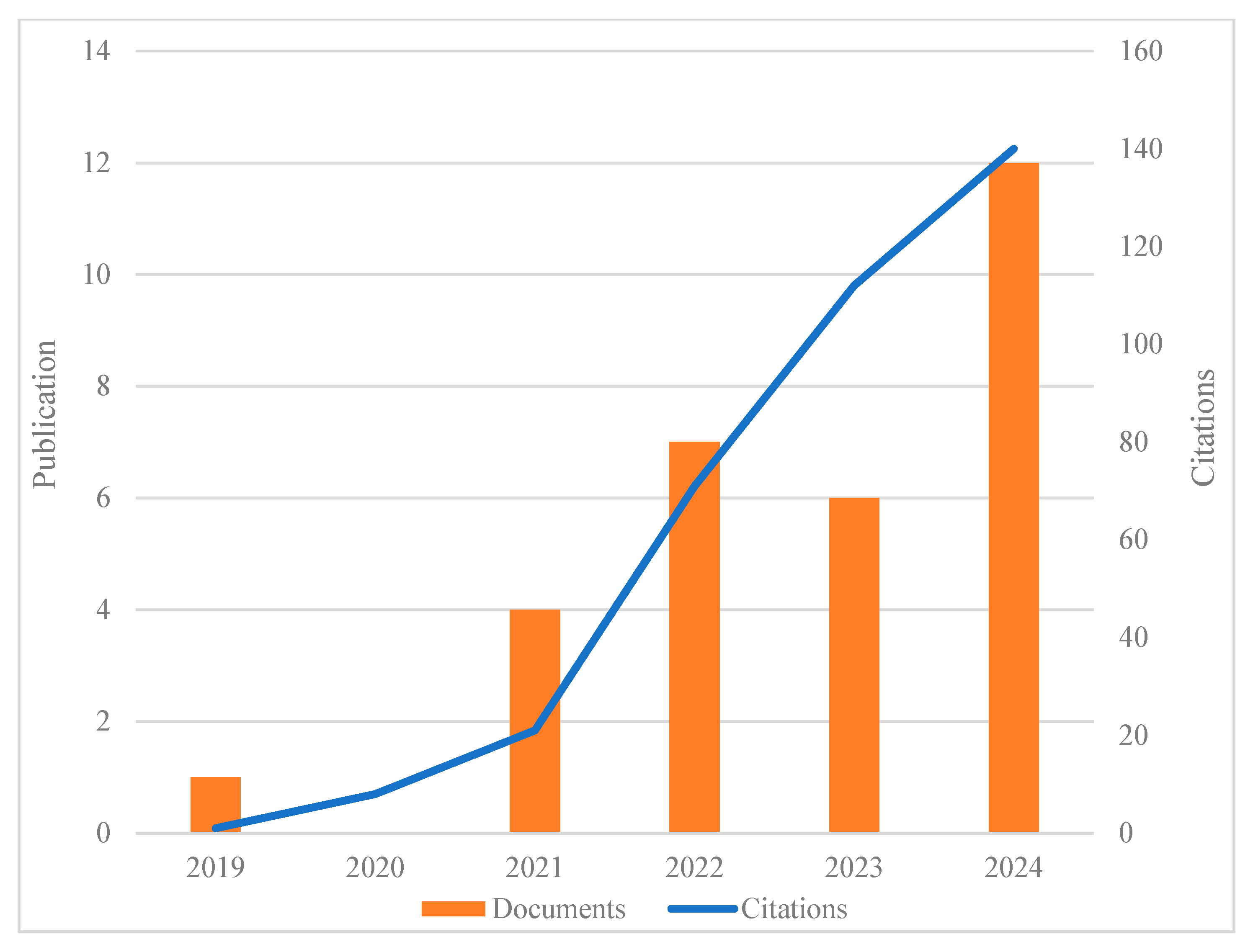

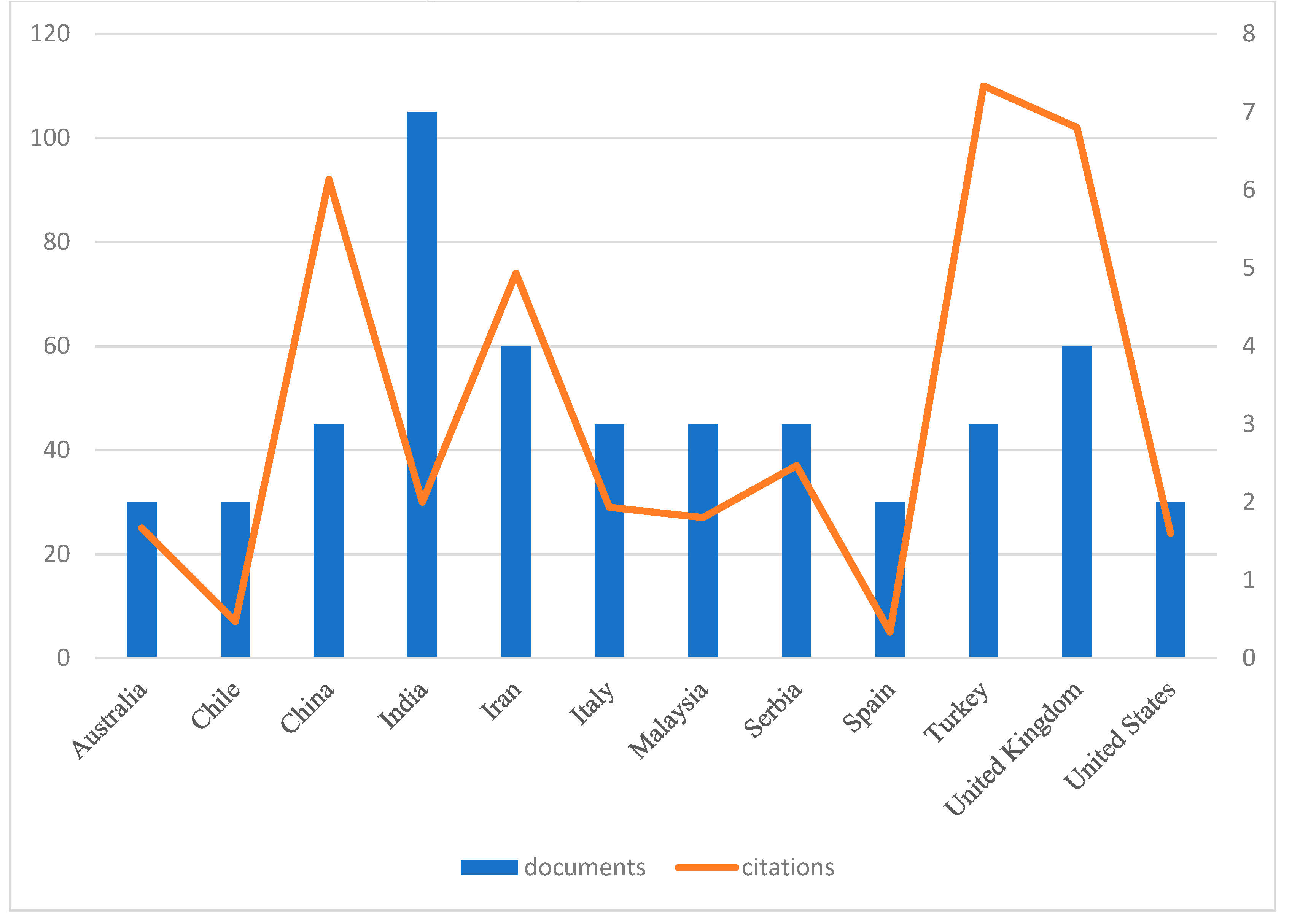
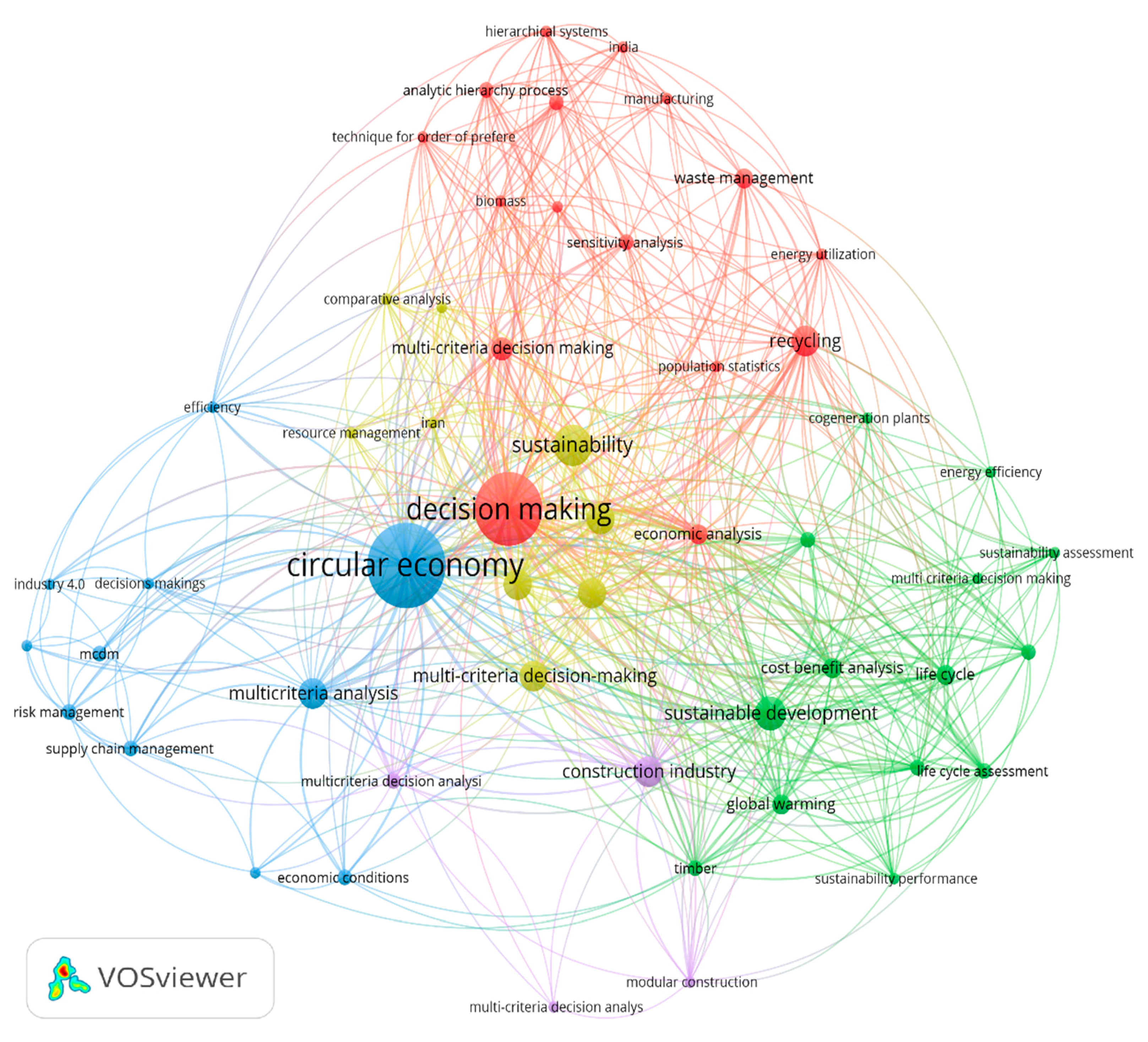
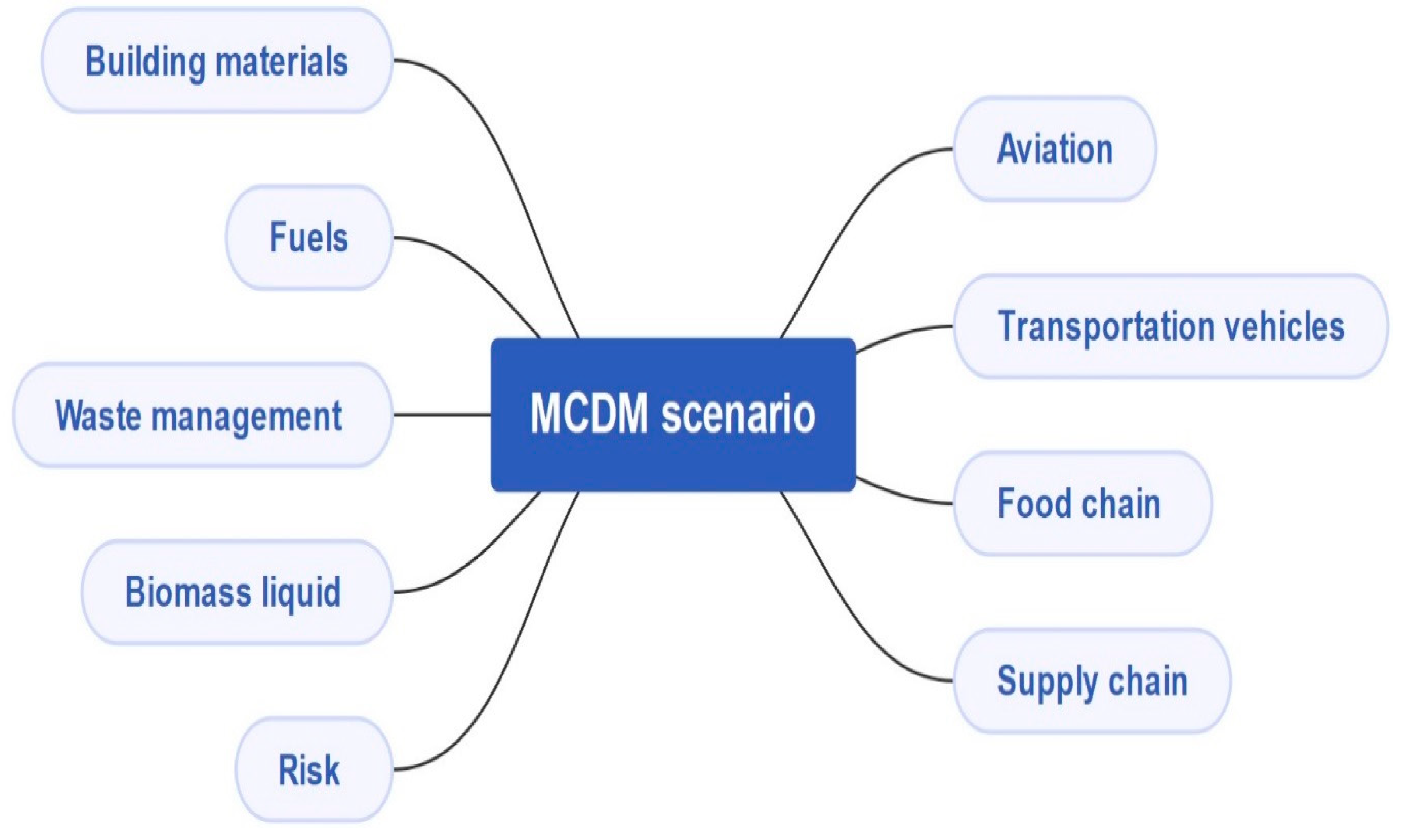
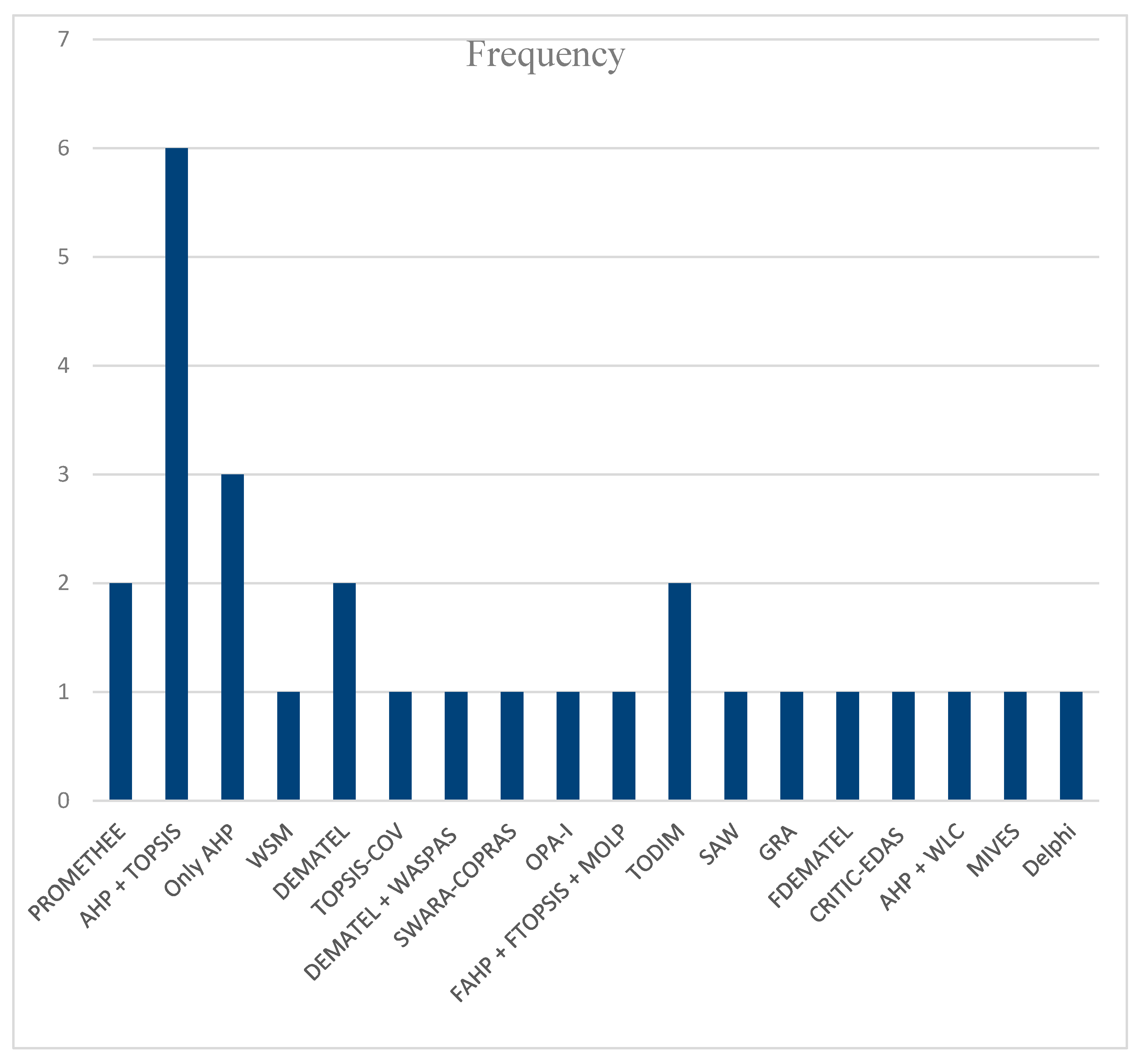
| NO | Keywords- Query | Number of Articles |
|---|---|---|
| 1 | “sustainability” AND “Circular Economy” AND “cost” AND “multi criteria decision making” | 17 |
| 2 | “sustainability” AND “Circular Economy” AND “cost” AND “multi criteria decision making” OR “MCDM” | 20 |
| 3 | “Circular Economy” OR “CE” AND “COST” AND “multi criteria decision making” | 30 |
| 4 | “Circular Economy” AND “cost” AND “multi criteria decision making” | 27 |
| 5 | “Circular Economy” AND “cost” AND “multi criteria decision making” OR “MCDM” OR “ Multi-criteria decision-making” | 31 |
| 6 | “Circular Economy” AND “LCA” AND “multi criteria decision making” | 2 |
| 7 | “Circular Economy” AND “LCA” OR “life cycle cost” AND “multi criteria decision making” | 4 |
| 8 | “Circular Economy” OR “CE” AND “LCA” OR “life cycle cost” AND “multi criteria decision making” | 5 |
| Source | Documents | Citations | Total Link Strength |
|---|---|---|---|
| Aerospace | 1 | 10 | 2 |
| Ain shams engineering journal | 1 | 10 | 7 |
| Biomass and bioenergy | 1 | 11 | 1 |
| Business strategy and the environment | 2 | 65 | 18 |
| Discover sustainability | 1 | 5 | 3 |
| Environment, development and sustainability | 1 | 15 | 4 |
| Frontiers in environmental science | 1 | 19 | 8 |
| Heliyon | 1 | 11 | 6 |
| International journal of production economics | 1 | 46 | 15 |
| Journal of building engineering | 1 | 4 | 2 |
| Journal of cleaner production | 2 | 57 | 6 |
| Journal of urban planning and development | 1 | 9 | 5 |
| Materials today sustainability | 1 | 9 | 2 |
| Production planning and control | 1 | 54 | 21 |
| Sustainability (Switzerland) | 4 | 127 | 9 |
| Transportation research part e: logistics and transportation review | 1 | 16 | 4 |
| Country | Documents | Citations | Total Link Strength |
|---|---|---|---|
| Australia | 2 | 25 | 138 |
| Chile | 2 | 7 | 61 |
| China | 3 | 92 | 110 |
| India | 7 | 30 | 20 |
| Iran | 4 | 74 | 189 |
| Italy | 3 | 29 | 291 |
| Malaysia | 3 | 27 | 197 |
| Serbia | 3 | 37 | 150 |
| Spain | 2 | 5 | 4 |
| Turkey | 3 | 110 | 128 |
| United Kingdom | 4 | 102 | 199 |
| United states | 2 | 24 | 109 |
| Keyword | Occurrences | Total Link Strength |
|---|---|---|
| Circular Economy | 25 | 161 |
| Decision Making | 21 | 166 |
| Sustainability | 10 | 61 |
| Cost Benefit Analysis | 4 | 48 |
| Multi-Criteria Decision-Making | 47 | 424 |
| Construction Industry | 7 | 56 |
| Analytical Hierarchy Process | 6 | 58 |
| Economic Analysis | 4 | 52 |
| Global Warming | 4 | 46 |
| Recycling | 7 | 65 |
| Environmental Impact | 3 | 35 |
| Sustainable Development | 8 | 77 |
| Waste Management | 4 | 26 |
| Life Cycle Assessment | 10 | 133 |
| Supply Chain Management | 3 | 17 |
| Economic And Social Effects | 3 | 32 |
| Economic Conditions | 3 | 17 |
Disclaimer/Publisher’s Note: The statements, opinions and data contained in all publications are solely those of the individual author(s) and contributor(s) and not of MDPI and/or the editor(s). MDPI and/or the editor(s) disclaim responsibility for any injury to people or property resulting from any ideas, methods, instructions or products referred to in the content. |
© 2025 by the authors. Licensee MDPI, Basel, Switzerland. This article is an open access article distributed under the terms and conditions of the Creative Commons Attribution (CC BY) license (https://creativecommons.org/licenses/by/4.0/).
Share and Cite
Tighnavard Balasbaneh, A.; Aldrovandi, S.; Sher, W. A Systematic Review of Implementing Multi-Criteria Decision-Making (MCDM) Approaches for the Circular Economy and Cost Assessment. Sustainability 2025, 17, 5007. https://doi.org/10.3390/su17115007
Tighnavard Balasbaneh A, Aldrovandi S, Sher W. A Systematic Review of Implementing Multi-Criteria Decision-Making (MCDM) Approaches for the Circular Economy and Cost Assessment. Sustainability. 2025; 17(11):5007. https://doi.org/10.3390/su17115007
Chicago/Turabian StyleTighnavard Balasbaneh, Ali, Silvio Aldrovandi, and Willy Sher. 2025. "A Systematic Review of Implementing Multi-Criteria Decision-Making (MCDM) Approaches for the Circular Economy and Cost Assessment" Sustainability 17, no. 11: 5007. https://doi.org/10.3390/su17115007
APA StyleTighnavard Balasbaneh, A., Aldrovandi, S., & Sher, W. (2025). A Systematic Review of Implementing Multi-Criteria Decision-Making (MCDM) Approaches for the Circular Economy and Cost Assessment. Sustainability, 17(11), 5007. https://doi.org/10.3390/su17115007






